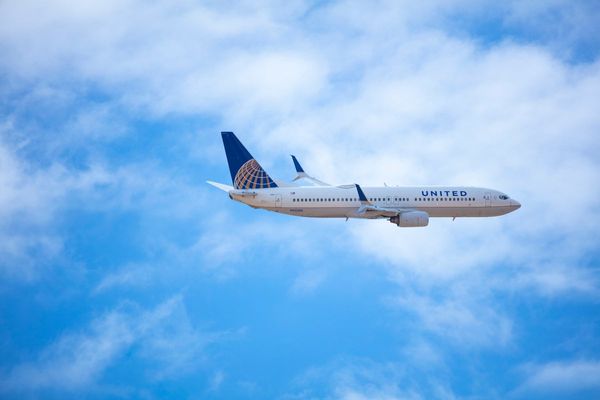Dr. Robert Kerlan refused to give in to his body's limitations. And in doing so, he pioneered sports medicine and showed pro athletes how to overcome limits too.
Kerlan (1922-1996) faced his first barrier in his early 20s. He was diagnosed with ankylosing spondylitis, a painful inflammatory disease of the spine and large joints. Still, he chose to become an orthopedic surgeon.
Performing surgery eventually became impossible due to Kerlan's disease. His hands became arthritic and he couldn't stand up long enough. Kerlan became progressively severely hunched over and was eventually permanently on crutches. He wound up undergoing four hip replacements because of his condition.
But Kerlan focused on what he could still do: apply his ideas to the field. He became renowned for the treatment and diagnostic methods he developed.
Kerlan's determination led to him not just living with his disability but overcoming it to help others.
Kerlan: Find Your Way Through Difficulty
In 1965 Kerlan co-founded the famed Kerlan-Jobe Orthopedic Clinic in Los Angeles with Dr. Frank Jobe. Kerlan was well-known as the long-time physician of the three main Los Angeles professional sports teams: the Dodgers, Lakers and Rams, where his title was medical director.
Dr. Ralph Gambardella, an orthopedic surgeon at the Kerlan-Jobe Institute, worked with Kerlan from 1982 until Kerlan's 1996 death.
"There was no sports medicine and Kerlan recognized that taking care of athletes required a different approach," Gambardella told IBD. "Athletes have special-needs problems, expectations, recovery and return-to-play time frames to deal with. All of that required the continuous development and evolution of new and innovative techniques and treatments."
"No one else was doing that at that time, which is why we refer to Dr. Kerlan as the Godfather of Sports Medicine," Gambardella said.
Some of the legendary Hall of Fame athletes who put their trust in Kerlan were basketball players Elgin Baylor, Jerry West, Wilt Chamberlain and Kareem Abdul-Jabbar. Dodgers pitcher Sandy Koufax was a Kerlan patient as were Rams football star Merlin Olsen and jockey Bill Shoemaker.
Kerlan and Jobe were also team physicians for the Los Angeles Angels of Anaheim, the Los Angeles Kings and a host of professional and college teams throughout the region.
Kerlan's legacy was so significant that on the day he died, flags at Dodger Stadium flew at half-staff and players and fans observed a moment of silence for Kerlan.
In 1996 Kerlan was inducted into the Southern California Jewish Sports Hall of Fame.
Use Humor As Treatment Like Kerlan
Seeing the light side of life helped Kerlan cope. "In addition to being a brilliant orthopedic surgeon, Dr. Kerlan had a sense of humor, loved all sports and was humble," said Hall of Fame basketball player Jamaal Wilkes, a former Laker. "Dr. Kerlan used his sense of humor to put his patients at ease."
Humor was vital to Kerlan's outlook on his career and life. He told the Los Angeles Times in 1992 the only time he really thought about his condition was when he went into a stadium on the road.
"Here I am walking on crutches, and it seems like I'm barely able to get around, and someone asks, 'Who are you?' I say 'I'm a doctor who takes care of the Rams or whatever team I'm with.' Oftentimes I get a double-take," he said.
"It's the same feeling I get when I walk into a room at the clinic and a (new) patient says, 'My God, what happened to you?' " Kerlan said. "When somebody makes you stop and look at it, it is kind of funny."
Forge Your Path
Kerlan was born in Bowlus, Minn. The future doctor was the son of a country doctor.
The man who would go on to treat famous athletes was an accomplished sportsman himself. When Kerlan graduated from Aitkin High in rural Minnesota at 16 he'd earned nine letters in sports.
The 6'2" Kerlan then attended University of California, Los Angeles, beginning in 1939. He was on the basketball team and lettered. Kerlan eventually left UCLA for the University of Southern California where he completed his undergraduate work and then his medical studies.
During World War II in 1944, Kerlan discovered in a medical exam for the armed forces he had ankylosing spondylitis in his spine, shoulders and hips. He was rejected for service.
He resumed his studies and graduated from USC Medical School in 1945. Kerlan began his private practice in 1950. And Kerlan began his sports medicine career as a volunteer for a minor league baseball team in Los Angeles.
Take The Initiative
When Major League Baseball came to Los Angeles in 1958 as the Dodgers relocated from Brooklyn, Kerlan decided he, too, was ready for the big leagues.
Kerlan boldly reached out to Dodgers' General Manager Buzzie Bavasi. And Kerlan suggested he become the team's physician.
Team physicians weren't a priority in sports teams back then. In fact Kerlan didn't receive an interview until the day before the season opened. He got the job but Bavasi wasn't sold on the importance of the position.
By the Dodgers' second season in Los Angeles, they'd won the World Series and Bavasi had changed his mind. He saw how Kerlan helped keep the team's aging stars productive.
"In 1959, when we won the pennant, Dr. Kerlan was our Most Valuable Player," Bavasi told the Los Angeles Times. "Kerlan made us realize there was such a thing as sports medicine. He was very popular. The players knew that because he was in pain, he understood their pain."
Kerlan: Apply Hands-On Experience
Kerlan didn't allow his condition to stop his work. And his work ethic revolutionized the idea of sports medicine.
"I'd get up early and cover patients in hospitals, operate two or three mornings a week and go to the office and see patients until 6 p.m.," Kerlan said." "Then I'd go to one stadium or another."
Kerlan was the sole doctor covering some 240 home games of local teams for several years, the Los Angeles Times said.
Know Knowledge Wins Out
One of Kerlan's initially skeptical new patients back in the early 1960s was future basketball Hall of Famer and legend Elgin Baylor of the Lakers.
Baylor suffered from consistent pain in his knees when doctors recommended he see Kerlan.
In Kerlan's office waiting for his first appointment, Baylor caught a glimpse of the doctor. "An extremely hunched-over man ... walking with two crutches," Baylor wrote in "Hang Time: My Life in Basketball."
"(Dr. Kerlan) looks like a question mark. ... He acknowledges me by lifting a crutch and aiming its rubber tip at me. This guy can barely help himself. How the hell can he help me?" Baylor wrote.
Baylor immediately left. When he couldn't find a doctor to help his ailing knees, Baylor gave Kerlan a chance. "We should be trying to banish prejudice of all kinds," Baylor realized. "I should not be biased against Dr. Kerlan because of his physical condition."
After an extensive examination and battery of tests, Kerlan's thoroughness won. He told Baylor he didn't have calcium deposits in his knees as other doctors said. Kerlan said Baylor had them in is quadriceps. That meant Baylor didn't need surgery as he'd been told, but a special therapy Kerlan developed.
"Not only (did) I find Kerlan to be one of the smartest men I've ever met, but we became lifelong friends," Baylor wrote.
When Baylor, at 30, suffered a catastrophic knee injury in the 1965 playoffs, Kerlan repaired the knee. He cautioned Baylor he'd never be the same player. But the combination of Kerlan's still-surgical skill and Baylor's determination led to him still being good enough to make four All-Star teams in the next five years.
Teach Your Mantra
Kerlan's daughter Kimberly Higgins told the Los Angeles Times that she inherited the same disease that her father had. When she was in college she had a flare-up of severe pain. She limped into the kitchen and told Kerlan she was in too much pain to go to school.
She recalled her father saying " 'Oh, yes, you will. You can never, ever give in to this. You have to be in charge.' He added, 'You have to be stronger than this disease.' "
Robert Kerlan's Keys
- Considered the pioneer of sports medicine as co-founder of the Kerlan-Jobe Institute orthopedic clinic.
- Overcame: Ankylosing spondylitis diagnosis in his early 20s, a painful inflammatory disease of the spine and large joints.
- Lesson: "You can never, ever give in to this. You have to be in charge. You have to be stronger than this disease."







